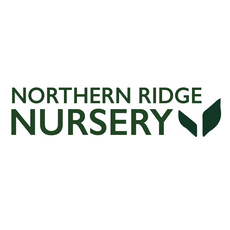10 Native Plants That Thrive in Your Garden!
Turning to nature’s bounty for your gardening inspiration not only promotes local wildlife but also reduces maintenance effort and environmental impact. Native plants, adept at thriving in their home regions, bring resilience and local charm to your backyard. Here, we explore ten native plants that excel in the garden ecosystem, enhancing your garden’s health and aesthetics while supporting local habitats.
Why Choose Native Plants?
Opting for native plants in your garden supports local ecosystems and Biodiversity. Adapted to the local climate and soil, these plants require less water, fertilizer, and pesticides. Moreover, they provide essential habitats for native wildlife including birds, bees, and butterflies, therefore, contributing to the preservation of their natural habitat.
The Top 10 Native Plants for Your Garden
1. Black-Eyed Susan (Rudbeckia hirta)
Region: Widespread across North America
Description: With its golden-yellow petals and dark brown centers, this sun-loving perennial attracts butterflies and birds, while being drought tolerant once established.
2. Purple Coneflower (Echinacea purpurea)
Region: Eastern and Central North America
Description: Recognizable by its purple petals and spiked seed heads, it’s popular among pollinators and works well in most soil types.
3. Blue Sage (Salvia azurea)
Region: Central and Eastern United States
Description: A drought-resistant plant that sprouts bright blue flowers, perfect for attracting hummingbirds and butterflies.
4. California Poppy (Eschscholzia californica)
Region: Western United States
Description: This state flower of California offers splendid orange blooms. It’s highly drought-tolerant, thriving in full sun and poor soil.
5. Mountain Mint (Pycnanthemum virginianum)
Region: Eastern North America
Description: Known for its aromatic leaves and pale pink flowers, mountain mint attracts various pollinators while being exceptionally resistant to pests.
6. New England Aster (Symphyotrichum novae-angliae)
Region: Northeastern United States
Description: Its vibrant purple flowers bloom in late summer to fall, offering a late season nectar source for pollinators.
7. Switchgrass (Panicum virgatum)
Region: All over the United States
Description: A versatile and ornamental grass, widely used for soil erosion control, it also serves as important habitat for local wildlife.
8. Butterfly Weed (Asclepias tuberosa)
Region: Eastern and Southern United States
Description: With clusters of orange or yellow flowers, this milkweed is crucial for monarch butterflies making it an essential for any Butterfly garden.
9. Bearberry (Arctostaphylos uva-ursi)
Region: Northern North America
Description: A low-growing evergreen, bearberry thrives in poor, sandy soils and is common in coastal regions, preventing soil erosion.
10. American Elderberry (Sambucus canadensis)
Region: Eastern North America
Description: Popular for both its white flowers and dark, edible berries which attract birds and can be used to make syrups and jams.
Caring for Native Plants
While native plants inherently require less maintenance, they do thrive best when their natural environment is mimicked. Proper sunlight, watering, and soil conditions specific to each plant's regional needs will lead to a healthy, vibrant garden. Researching each plant's specific preferences helps them establish faster and stronger.
Conclusion
Integrating native plants into your garden is not only a choice for beauty and ease but also a responsible step towards ecological conservation. As you plan your garden, consider these ten native plants that are sure to enrich your outdoor space with minimal effort, while supporting the local ecosystems and wildlife.
Ready to Green Your Space?
Explore our wide range of native plants perfect for your region. Visit our Native Plants Collection to select plants ideally suited for your garden, and join a growing community of eco-conscious gardeners today!










